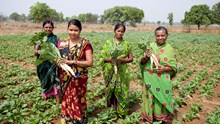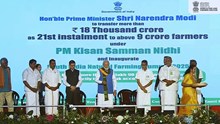
Kachri (Cucumis pubescens), also known as wild musk melon or desert cucumber, belongs to the Cucurbitaceae family, which includes cucumbers, melons, and gourds. It is native to the arid and semi-arid regions of India, particularly Rajasthan. Known by various names such as kachari, kachariya, chibdin, and gurmi, this hardy vine produces small, oval, or ellipsoidal fruits with dark green stripes resembling miniature watermelons. You have to be careful with Kachri, as sometimes it turns out bitter, but when ripe, Kachri has a mild sweet and slightly tangy flavor, making it more suitable for use as a vegetable in cooking rather than as a dessert fruit.
Adaptation and Cultivation
Kachri thrives in sandy, nutrient-poor soils with very little water, making it an ideal crop for desert climates where many plants struggle to survive. It grows extensively across Rajasthan’s harsh environment in wild form. Its resilience to drought and poor soil conditions allows farmers in these regions to cultivate kachri with minimal inputs, reducing their dependence on costly fertilizers and irrigation.
Culinary Uses of Kachri
In Traditional Rajasthani cuisine, kachri is a versatile ingredient. Its firm texture and subtle flavor make it perfect for sabjis, raitas or Kadhi, where it soaks up spices and adds a refreshing crunch. It is also commonly used in pickles and chutneys, which add zest to meals. Young, tender kachri fruits are sometimes eaten raw or lightly cooked, serving as a cooling summer snack or along with ker sangri sabji for the tangy punch. A remarkable traditional use is its dried powder as a natural meat tenderizer, making meat softer and easier to digest while imparting a mild flavor.
Nutritional and Medicinal Benefits
Kachri is valued not just for its taste but for its health benefits. With high water content, it helps keep the body hydrated, especially during India’s intense heat. The fruit is rich in dietary fiber, which promotes healthy digestion and relieves constipation. Traditional medicine attributes cooling properties to kachri, making it effective in reducing body heat. It also stimulates appetite and has mild diuretic effects, helping flush toxins through urine. Additionally, it is used to relieve abdominal pain and digestive issues, demonstrating its role in folk remedies.
Sustainable Farming and Environmental Impact
For farmers, kachri is a low-maintenance, eco-friendly crop that fits well with sustainable agriculture. It grows well without chemical fertilizers or pesticides and requires minimal irrigation, aligning with organic farming principles. Its creeping vines cover the soil, preventing erosion and maintaining soil health, which is crucial in fragile desert ecosystems. Farmers often intercrop kachri with other crops or use marginal lands for its cultivation, increasing biodiversity and making efficient use of available land.
Challenges and Future Potential
Despite its advantages, kachri is not widely commercialized due to limited market access and lack of awareness outside its traditional growing regions. Its perishable nature makes transportation and storage difficult, restricting its availability in urban markets. However, growing interest in drought-resistant crops and natural health remedies is opening new doors for kachri. With further research into its nutritional and medicinal properties, along with better post-harvest handling and the creation of value-added products like pickles and herbal extracts, kachri could gain broader acceptance and higher demand.
Kachri is more than just a desert vegetable; it embodies resilience, sustainability, and cultural heritage. Its ability to survive extreme conditions, its diverse culinary and medicinal uses, and its importance to small-scale farmers position it as a valuable crop for the future. Promoting kachri cultivation supports livelihoods, preserves traditional knowledge, and contributes to ecological balance. In the face of climate change and agricultural challenges, crops like kachri offer a promising path toward sustainable farming that benefits both communities and the environment.















